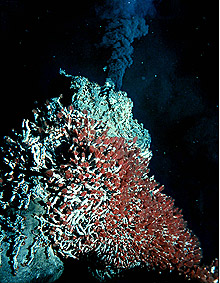
Critical Seabed Minerals and the Law of the Sea Treaty: Implications for National Security and Economic Growth
Podcast: Play in new window | Download
Subscribe: Apple Podcasts | RSS

Yesterday, ASP CEO Steve Cheney moderated an event at The Stimson Center called “Critical Minerals from the Sea: U.S. Interests in Deep Seabed Minerals.” The panel of experts included Dr. James Hein, esteemed marine geologist with the US Geological Survey and Adjunct Professor at the University of California; Dr. Miles Libbey, founder of the seabed broker Seaminr and recently retired executive from Lockheed Martin; and Caitlyn Antrim, Executive Director of the Rule of Law Committee for the Oceans. (Please see their biographies listed below.)
All three panelists have had extensive involvement with deep seabed mining from scientific, business, and policy perspectives, and managed, today, to shed some crucial light on why ratifying the Law of the Sea would enable the US to reduce its dependence on foreign supplies of critical minerals.
As each of their presentations showed, exclusive American access to rare earth minerals, essential to technology as diverse as cell phones and hybrid cars, is necessary to the current and future health of both the defense and technology industries.
All three panelists furthered conferred that deep seabed mining is smarter, scientifically and economically, than standard land mining efforts which require huge start-up capital and traditionally yield disappointing results.
By ratifying the Law of the Sea Treaty there are significant and undeniable economic benefits to be had, not only in terms of job creation, but also in terms of enhancing American competitiveness and expanding U.S. commerce.
There were a number of people in the audience who have also been working very intimately with the Law of the Sea Treaty over the years.
Most notable of these was Senator John W. Warner, long-time advocate of the Law of the Sea Treaty, who spiritedly emphasized the “enormous potential jobs, commerce and so forth connected with this” effort to harvest the resources from our continental shelves.
Click here to listen to the event
Want to learn more about the Law of the Sea Treaty? Check out our “Separating Fact from Fiction” pamphlet and our discussion on rare earth minerals.
You can read Caitlyn Antrim’s presentation below, and find a fact sheet from Dr. James Hein
Panelist Biographies
Dr. James Hein is a marine geologist and received a Ph.D. from the University of California at Santa Cruz in 1973. He has studied deep-ocean mineral deposits for the past 37 years and is currently a senior scientist with the U.S. Geological Survey and an Adjunct Professor at the University of California. He is President of the International Marine Minerals Society and has participated in activities of the International Seabed Authority since 2000. His areas of research include all types of deep-ocean mineral deposits, comparisons of land-based and marine mineral deposits, and the importance of rare metals and rare-earth element in marine deposits to emerging- green-, and high-technology applications.
Dr. Miles A. Libbey, III, is the founder of the seabed broker Seaminr, developing best practices to help international clients rapidly reach the commercial harvesting phase of seabed metals and minerals. As a recently retired executive from Lockheed Martin he led an Advanced Solutions team that focused on bringing disruptive unmanned technologies to the security and undersea sectors. As a serial entrepreneur he has founded three companies. As a Naval Officer, industry executive and entrepreneur his experience in high technology development has been to spur solutions by developing positive synergy between clients’ needs and integrated soft- and hardware total systems solutions. He has been published over 15 times and holds 4 patents.
Caitlyn Antrim is the Executive Director of the Rule of Law Committee for the Oceans. In addition to her work on the law of ocean uses and the Law of the Sea Convention, Caitlyn is an expert in mineral economics, the technology of deep ocean mining and national strategic and critical materials policy. At MIT she earned the professional degree of Engineer with her work developing the first open source model of the technology and costs of deep seabed mining. She has served as a strategic minerals analyst for the Secretary of Commerce and a Deputy US Representative to the Law of the Sea Conference. She went on to direct the studies of strategic materials at the Congressional Office of Technology Assessment and the National Materials Advisory Board.






[…] Critical Seabed Minerals and the Law of the Sea Treaty: Implications for National Security and Econo… […]